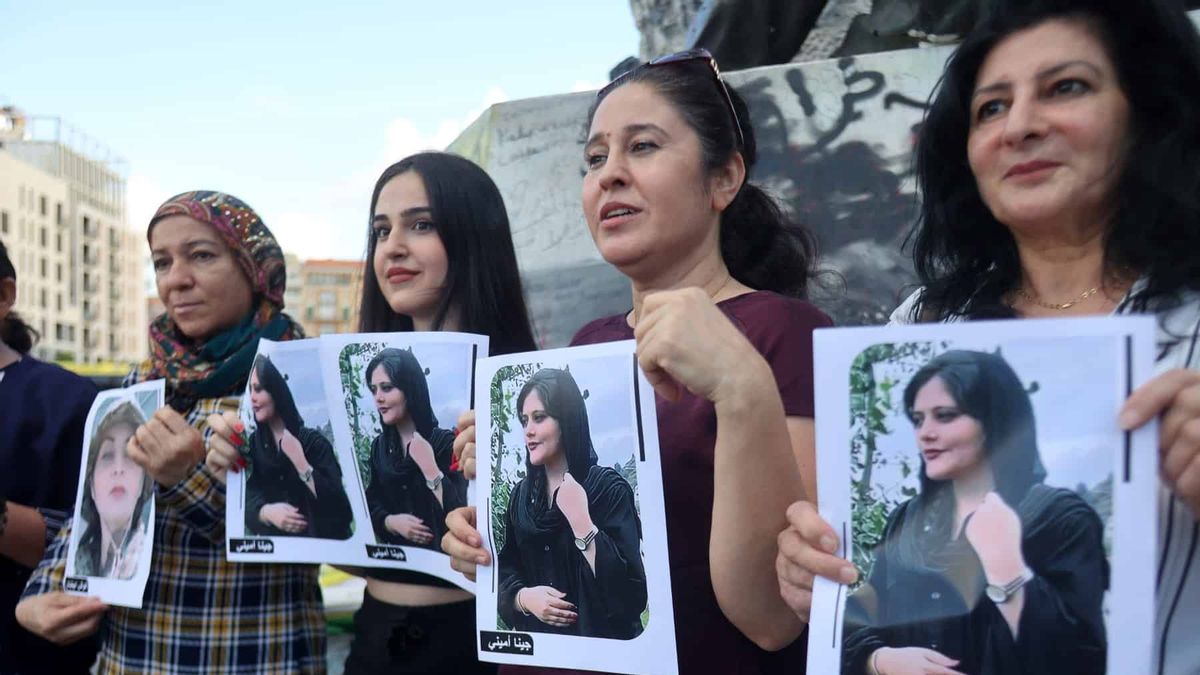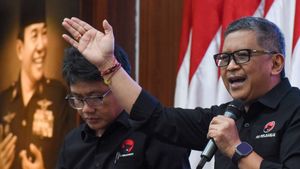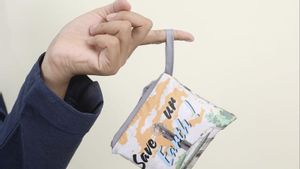JAKARTA - The death of Mahsa Amini (22) angered. Thousands of Iranians in a number of cities staged a one-week demonstration after Amini died on September 16, 2022. The clashes between protesters and security officers were inevitable.
The initial demonstration was only a form of solidarity, asking Iranian Moral Police to reveal the death of the Kurdish woman. The ruling party said Mahsa Amini fainted while undergoing re-education at the detention center due to her heart disease. He fell into a coma and died three days later.
However, according to Emtedad, Iran's media manufacturer, the family denied it. Amini has no history of heart disease. What is more suspicious, the family should not see Amini's body as a whole when it is about to be buried.
"They lie. They lie. They lie. Everything is a lie... no matter how much I beg, they will not let me see my daughter," Amjad Amini, Mahsa Amini's father, told the militant BBC.
After the protests grew bigger, the demands not only tried the Moral Police but also expanded to the rules for the use of the hijab. Mahsa Amini was initially arrested by the Moral Police for not wearing the hijab perfectly on September 13 during a visit to Tehran. Amini is a young woman who lives in the city of Saqqez, Kurdistan Province, northwestern Iran.
Protesters began voicing freedoms for women on behalf of human rights. Asking the government to revoke the rules that require women to wear the hijab when in public places.
Women, live, freedom, shouted the protesters.
Dozens of people were killed and hundreds injured. The demonstration is reportedly the largest since 2019, when security forces cracked down on protesters opposing rising fuel oil prices.
"We are all saddened by this tragic incident. However, chaos is unacceptable," Iranian President Ebrahim Raisi said in an interview with state television station reported by Reuters, on September 29, 2022.
"The government's red line is the security of our people. We cannot allow people to disturb the peace of the people through riots," Raisi added.
Not only domestically, Mahsa Amini's death also resulted in strong reactions from a number of parties. French weekly magazine banjir Hebdo sampai created a caricature-making contest for Iran's Supreme Leader, Ayatullah Sayyid Ali Khamenei in December 2022 as a form of support for Iranian men and women who risked their lives. Maintaining freedom against the the theoretics that have oppressed them since the Iranian Revolution in 1979.
The Karikatur, which was published byterhebdo on January 4, was also ultimately seen as a form of too much protest. Images featured in selected caricatures tend to insult Iran's Grand Leader.
The solidarity show for Mahsa Amini in Iran is the largest since 2019, when security forces cracked down on protesters who opposed rising fuel oil prices.(Wikimedia Commons/Ideophagous)
"The insulting and indecent act of French publication in issuing cartoons against religious and political authorities will not proceed without an effective and decisive response," Iranian Foreign Minister Hossein Amirabdollahian tweeted on January 4, 2023.
"We will not allow the French government to exceed its limits. They must have chosen the wrong path," he added.
The violation of the hijab rule in Iran, according to The Indonesia Society for Middle East Studies (ISMES) adviser Smith Alhadar, is partly not against Islamic teachings, but is only used as a symbol of resistance to the regime.
Because, during the 43 years after the revolution, the regime has not been able to bring about the socio-political progress and prosperity of the people even though Iran is one of the largest oil and gas producing countries in the world.
Economic life, in particular, was worse than in the era of the Pahlevi Dynasty. Socially, people's space for movement is limited, especially for women.
From a political point of view, the regime also limits freedom of opinion and the absence of independent mass media and political parties. The economic sector is also very concerning, Smith said in his writing entitled "Iran's Theoration and the Political Dimension of Hijab" in Kompas.
Unlike Saudi Arabia. Although previously also had strict rules regarding the hijab and dress code, this oil-producing country was able to keep the country's economy stable. Thus, there are almost no specific records regarding the citizens' resistance to these rules.
In fact, Crown Prince Muhammad bin Salman in an interview with British media, The Guardian in 2017 is determined to bring Saudi Arabia to a moderate style, open to the world and all religions.
Bin Salman assessed that the rigid doktrin, which dominated almost all lines of life over the last 30 years, was "unnormal." Deutsche Welle wrote that past monarchy leaders did not know how to react to Iran's Islamic Revolution, and chose a closed ideology to protect the kingdom from the ghost of revolution from across theulan Gulf.
"What has happened in the last 30 years is not Saudi Arabia. What has happened in this region for the last 30 years is not the Middle East. After the 1979 Iranian Revolution, people want to imitate this model in various countries, one of which is Saudi Arabia. We don't know how to respond. And the problem is that it is now spreading all over the world," said the prince.
"Now is the time to change that," he said.
Bin Salman wants Saudi Arabia to become the center of the world of Arabs and Islam, the world's investment power, and the center that connects the three continents, namely Asia, Africa, and Europe.
So far, Saudi Arabia has made a breakthrough in civil rights by allowing women to drive and play a role in the success of development programs in all fields. This includes allowing women to work by wearing clothes they like while they keep polite. Except in the holy cities of Mecca and Medina.
"It's simple that we want to return what we are following. Moderate Islam is open to the world and all religions. As many as 70 percent of Saudis are younger than 30 years old. We honestly don't want to spend another 30 years fighting extreme views, we will destroy them now and as soon as possible," wrote Deutsche Welle.
In Islam, women's law covers aurat is mandatory. However, what is different from interpretation is the aurat limit. The difference, as quoted from the book 'Problematics of Contemporary Jurisprudence' by Prof. Dr. Hj. Huzaemah Tahido Yanggo, depends on who the woman is dealing with.
The female letter when dealing with Allah SWT (sholat) is the whole body except for the face and palms of her hand. When dealing with those who are not her marams, the ulama agree that the boundaries of a woman's aurat are the whole body except for the face, palms of the hands, and the two soles of the feet.
Unlike when dealing with the mahram, according to Syafiiyyah, the aurat of a woman is the same as a man, namely between the tomb and the knee.
Regarding the use of the hijab, Bin Salman argued, "The decision is entirely left to women to decide what types of clothing they deserve and are polite to wear."
The English, Chinese, Japanese, Arabic, and French versions are automatically generated by the AI. So there may still be inaccuracies in translating, please always see Indonesian as our main language. (system supported by DigitalSiber.id)










